After Banning Exaggerated Intelligent Driving Claims, Retractable Door Handles Also Face Regulation
![]() 05/13 2025
05/13 2025
![]() 651
651
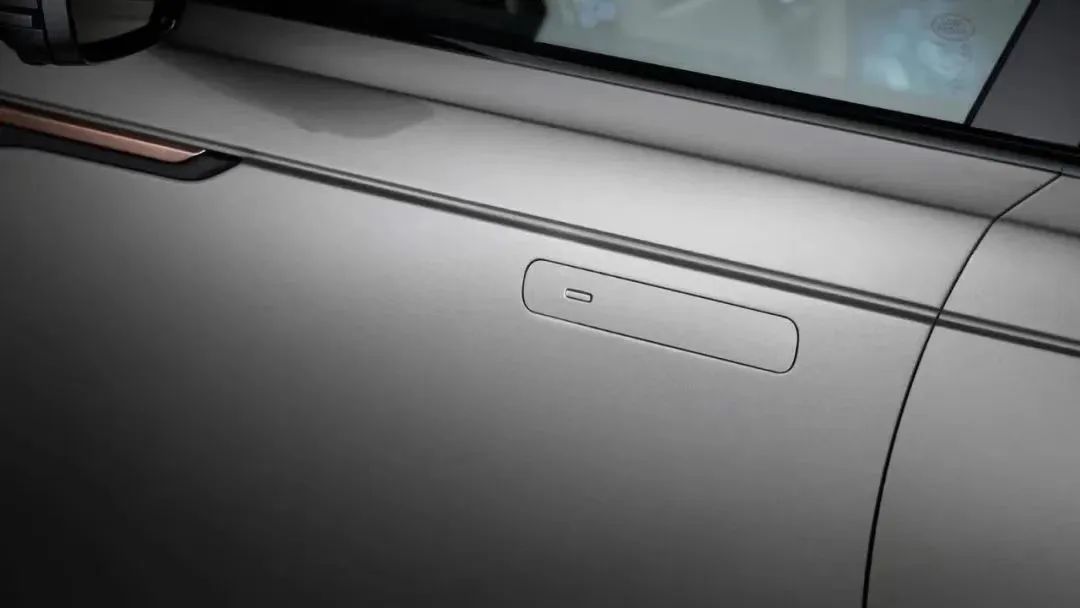
Time to Address These Inconvenient Designs
We all know which is more important: showcasing technology or saving lives.
The first time I saw a hidden door handle, I wondered why such a cumbersome design had become a trend in innovative automotive design.
Just like in the intelligent driving industry, when public opinion reaches a boiling point, national regulation swiftly steps in.
On May 8, the Ministry of Industry and Information Technology's official website released a draft for public comment on the mandatory national standard titled "Technical Requirements for Automotive Door Handle Safety," officially initiating a systematic overhaul of retractable door handles.
The draft directly highlights risks associated with retractable door handles, including insufficient strength, potential safety hazards in control logic, difficulty in recognition and operation (due to being hidden without marks), failure during power outages, and pinching hands. It also mandates regulations on the layout, marking, safety functions, and structural strength of retractable door handles.
In four words: refreshing!

01
Inconvenient Door Handles
"When the vast majority of people find a design confusing, it is most likely an inconvenient design."
It's undeniable that the reason automakers use retractable door handle designs is noble – to reduce wind resistance.
This trend began with the mass production of retractable door handles.
The earliest example can be traced back to the 1954 Mercedes-Benz 300SL, with its low-slung body and streamlined design, reaching a top speed of 263 km/h, making it the fastest mass-produced car at the time.

While this figure seems unremarkable now, it was groundbreaking at the time. Behind its extremely lightweight and streamlined body was an inconspicuous detail: the use of hidden door handles for the first time to reduce wind resistance.
Almost all supercars that have set speed records since then, including the Lamborghini Countach and Koenigsegg Agera RS, have adopted similar designs. For a while, the design of retractable door handles became exclusive to supercars, symbolizing high-end and speed.
Entering the era of electrification, it was Tesla that brought this design into ordinary households.
In 2012, the Tesla Model S emerged, automatically popping out from its hidden state when the owner approaches with the key and retracting automatically after locking. Over a decade ago, this was somewhat sci-fi.
After Tesla's global success, retractable door handles became popular, and this design subsequently became trendy among many domestic new energy vehicle makers.
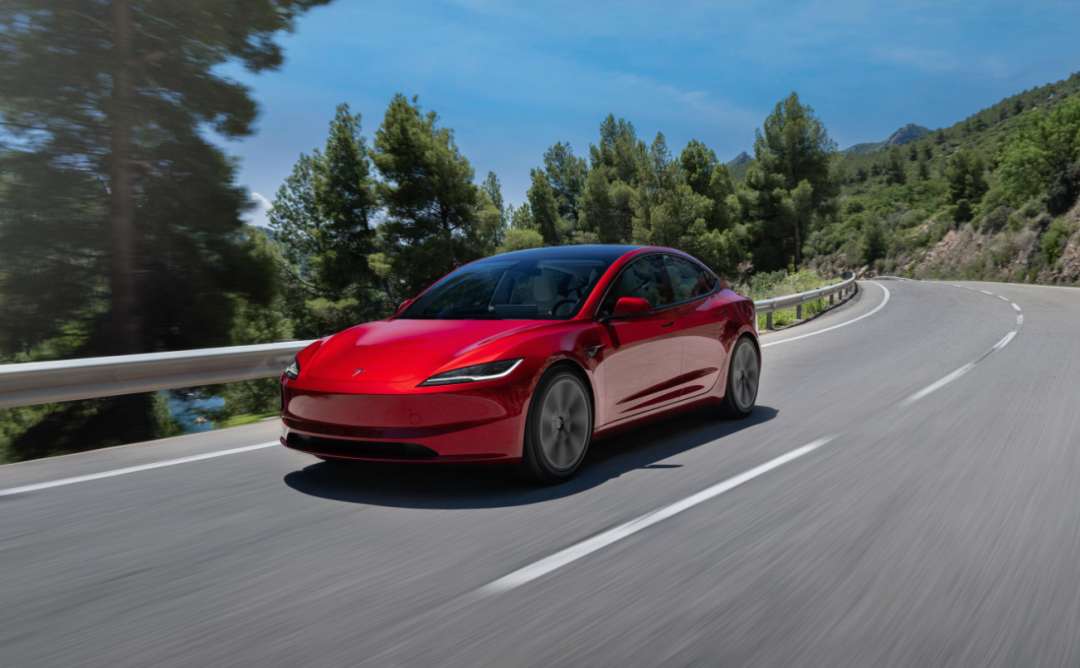
It even became a distinguishing feature between new energy vehicle startups and traditional automakers for a time.
Of course, there is another important reason. Amidst the widespread "range anxiety" of new energy vehicles at that time, reducing wind resistance meant improving driving range.
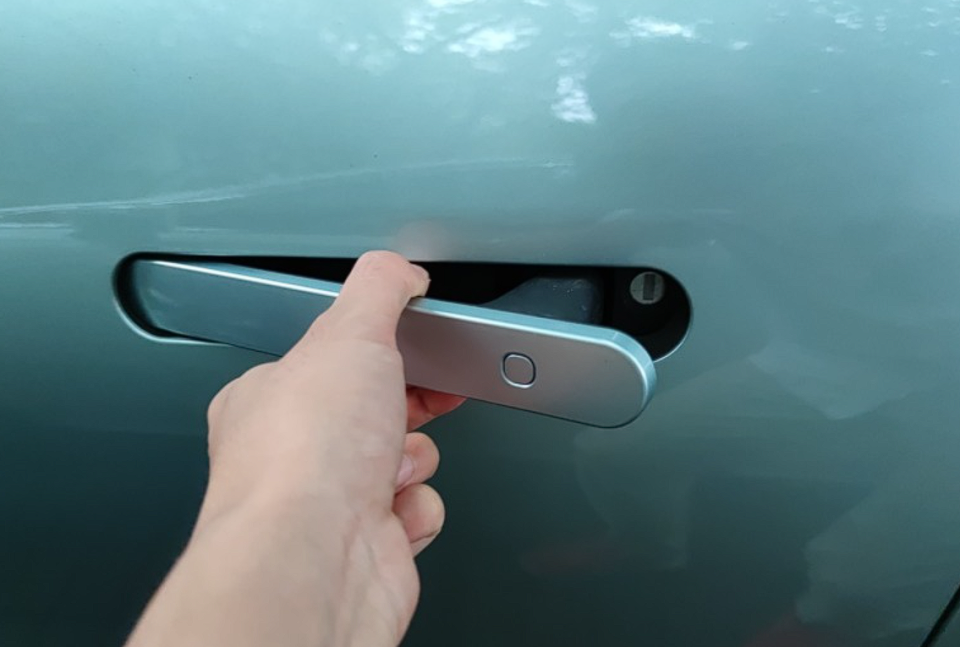
However, at that time, automakers and users did not deeply consider how complex such a design was or whether the structure was reliable.
Over time, many issues began to surface, such as embarrassment when entering the car, violent door-slamming after rain or snow, and even frequent hand pinching.
The worst scenario is sacrificing safety for aesthetics.
02
Not Banning, but Safety First
Public data shows that in 2024 new energy vehicle accidents, 12% of rescue delays were related to door handle design defects, an increase of 8 percentage points from 2020.
One of the most well-known accidents involved the famous celebrity Jimmy Lin and his son, who were involved in a car accident followed by the vehicle catching fire. However, rescuers who arrived later found that they could not open the door from the outside. It was only because the child in the passenger seat was still conscious and opened the door from inside the car.
In recent years, in many new energy vehicle traffic accidents, "whether the door can be opened in time" has become a focal point of discussion among many netizens.
It's not surprising that such public opinion has emerged. The seemingly "cool" retractable door handles are highly dependent on the electrical system. In accidents such as collisions and fires, if the circuit is interrupted, the handle may not pop out, causing occupants to become trapped inside the vehicle.
Other data shows that the breaking time of retractable door handles is 2.75 times that of traditional door handles, which means that in the event of an accident, rescue will be more difficult. The longer the wait for rescue, the lower the chance of survival.

As stated in the Ministry of Industry and Information Technology's request for comments, "with the rapid development of automotive electrification and intelligence, the following issues have been exposed in the market application of retractable door handles: insufficient strength, potential safety risks in control logic, difficulty in recognition and operation (hidden without marks), failure during power outages, pinching hands, etc., posing potential escape and rescue risks."
In fact, there were no mandatory standards for new types of door handles globally before. In China, traditional mechanical door handles have the QC/T 988-2014 standard, specifying over 50 tests such as high and low temperature, vibration, and impact, while electric retractable door handles rely solely on the automakers' self-discipline.
The introduction of this request for comments also fills the technical gap in the safety aspects of intelligent door handles.

For example, it is clearly stated for the first time that the retractable door handles of M1, N1 category vehicles, and multi-purpose trucks must meet four core requirements: mandatory equipment of mechanical emergency devices, fluorescent marking size not less than 3 cm x 5 cm, full-climate reliability testing from -40°C to 85°C, and anti-pinch force ≤ 150N with reverse response within 0.5 seconds.
From the perspective of rescue and escape, it is necessary to strengthen the safety logic of automotive door outer handles in accident scenarios such as collisions and vehicle fires, and increase safety redundancy design requirements such as mechanical or power-off protection. Both electric and retractable door handles must be equipped with mechanical unlocking mechanisms independent of the electrical system to ensure that they can be opened physically within 30 seconds after a collision or power outage, and require independent power supply modules.
In addition, it is necessary to ensure that in the event of rollover or fall accidents, the door handles can prevent malfunctions, thereby reducing the risk of occupant falls. Standardize the easily recognizable safety marks for retractable door inner handles and emergency door inner handles to ensure mark visibility, thereby reducing the difficulty of occupant escape in emergency situations. Ensure the structural strength of the door handle to prevent the loss of function of the door lock operating mechanism after an accident.
In summary, future door handles cannot only be flashy; safety and practicality must come first.
03
Cars Do Not Need 'Superficial Innovations'
In fact, before this request for comments was issued, many automakers and automotive industry leaders had already examined the issues with retractable door handles and intentionally avoided this design.
Wei Jianjun, Chairman of Great Wall Motors, has repeatedly expressed his dissatisfaction with retractable door handles in public. He believes that such designs "do more harm than good" as they are heavy, noisy, and overly reliant on electricity. In the event of a collision or power outage, the doors may not open, seriously affecting escape.

He also bluntly stated: "To sacrifice safety for that almost negligible wind resistance optimization is putting the cart before the horse." Therefore, Great Wall Motors' current approach is to avoid using retractable door handles whenever possible.
In addition, He Xiaopeng also stated in an interview during the Two Sessions that Xiaopeng Motors is currently developing door handles that are "easier to open in extreme situations," focusing on solving reliability issues in scenarios such as low-temperature freezing and circuit failures. The implication is that the current retractable door handles have deficiencies.
Of course, some automakers choose not to follow the trend. For example, the popular Xiaomi SU7 uses semi-retractable door handles, which are aesthetically pleasing while retaining the mechanical design of traditional door handles.
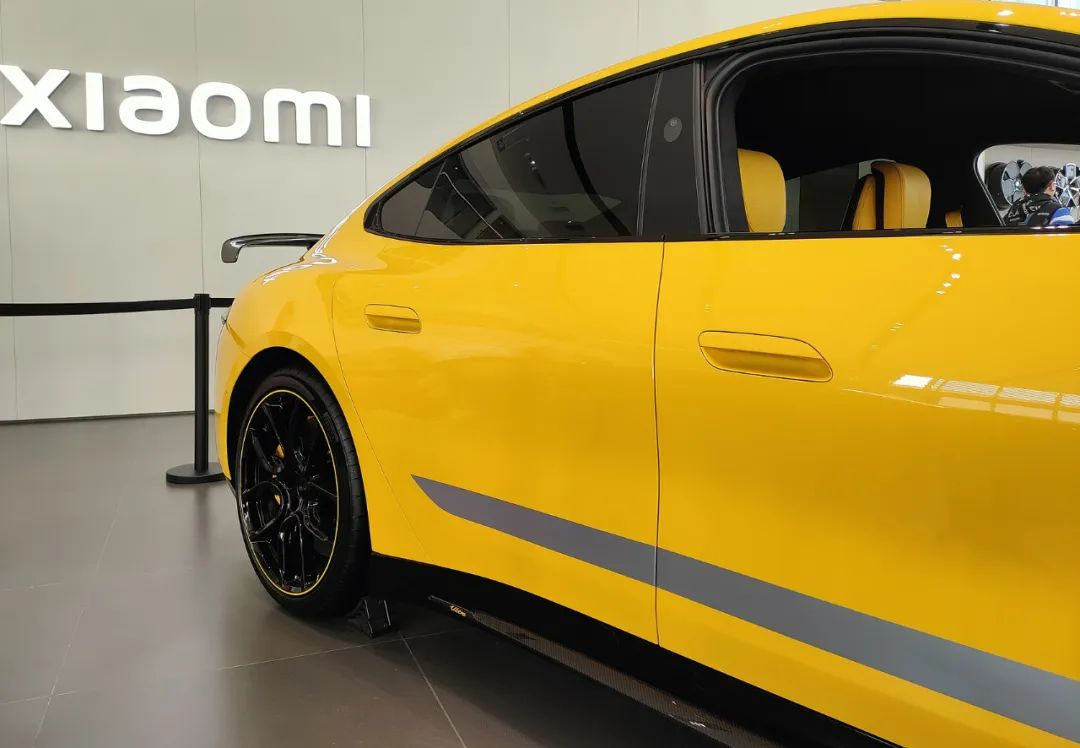
There is also the newly launched AITO M8, which is compatible with three opening methods: capacitive, touch, and mechanical pull handles. Lightly pressing the button on the door handle automatically opens the door. Placing your hand inside the induction area of the door handle makes the door automatically pop open. Directly pulling the door handle upwards allows for mechanical opening, basically covering all scenarios.
For current automakers' R&D capabilities, such a design does not seem to be a difficult task. Users can open the door as they wish, giving them control over the opening method, which is both aesthetically pleasing and ensures safety.
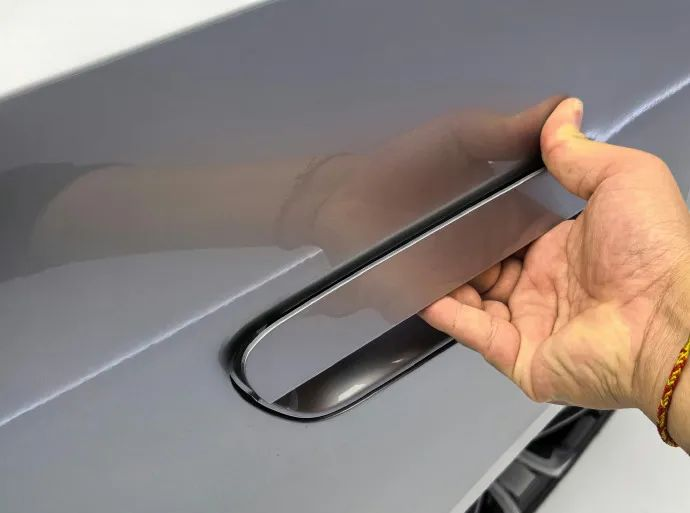
Not long ago, another announcement from the Ministry of Industry and Information Technology put the brakes on the ubiquitous marketing of intelligent driving, and now it is the turn of retractable door handles. This rectification is not to eliminate hidden designs but to draw a red line for innovation.
From the rectification of assisted driving to door handles, its significance lies in the fact that when the automotive industry transforms towards intelligence and electrification, any technological innovation must not compromise safety benchmarks.
Cars have never needed 'superficial innovations.' The introduction of this new regulation is not the end but the beginning.








